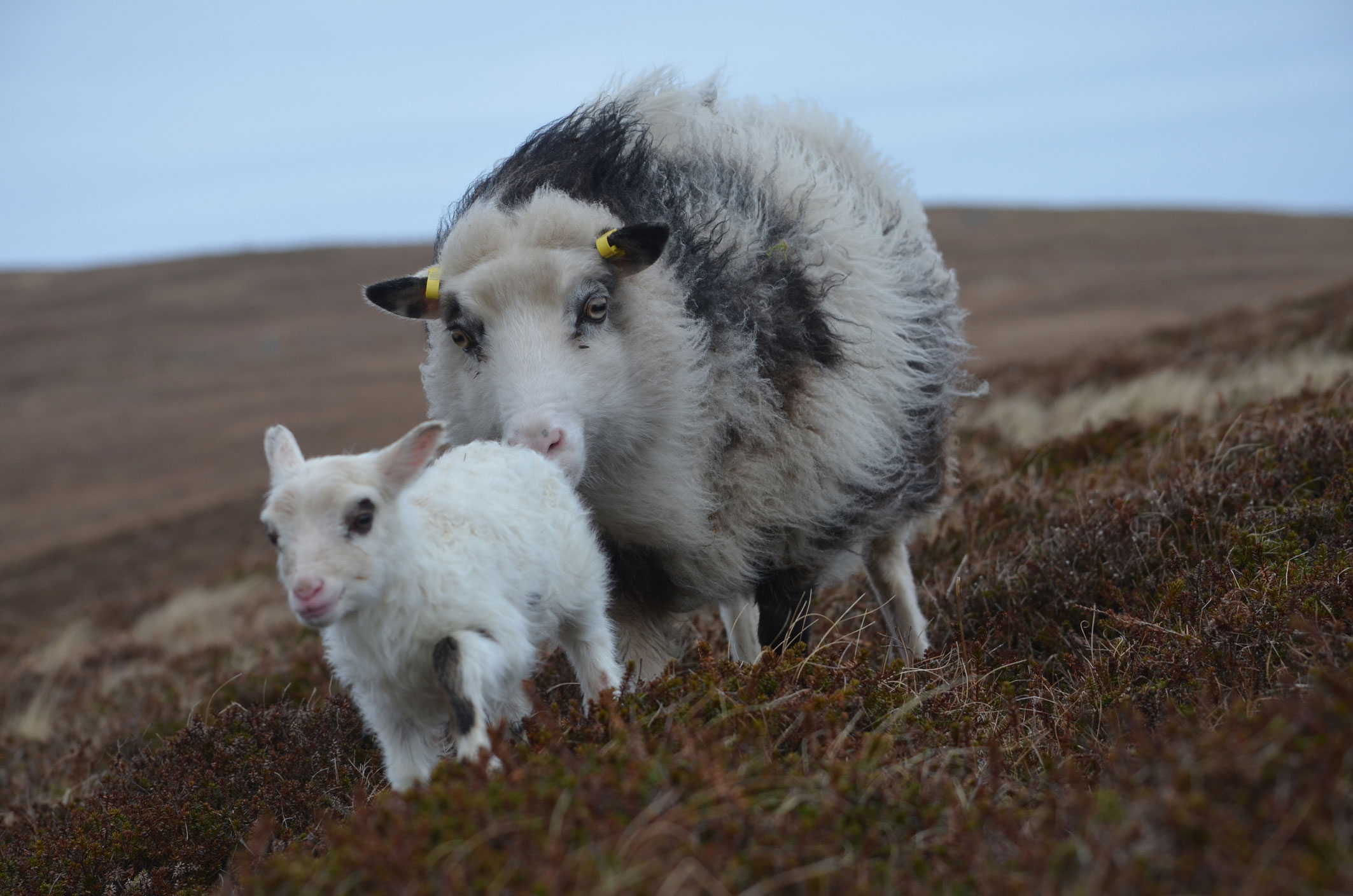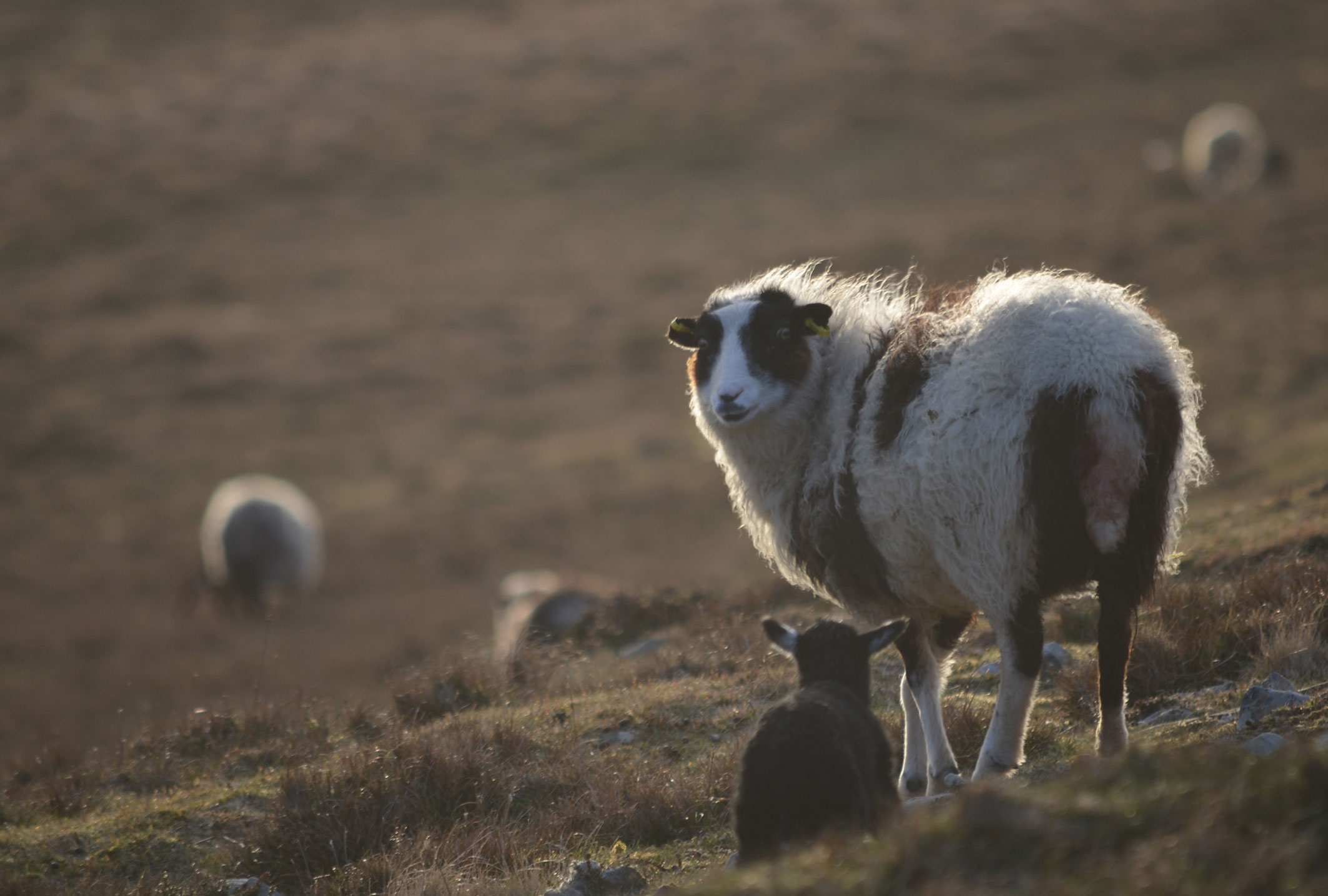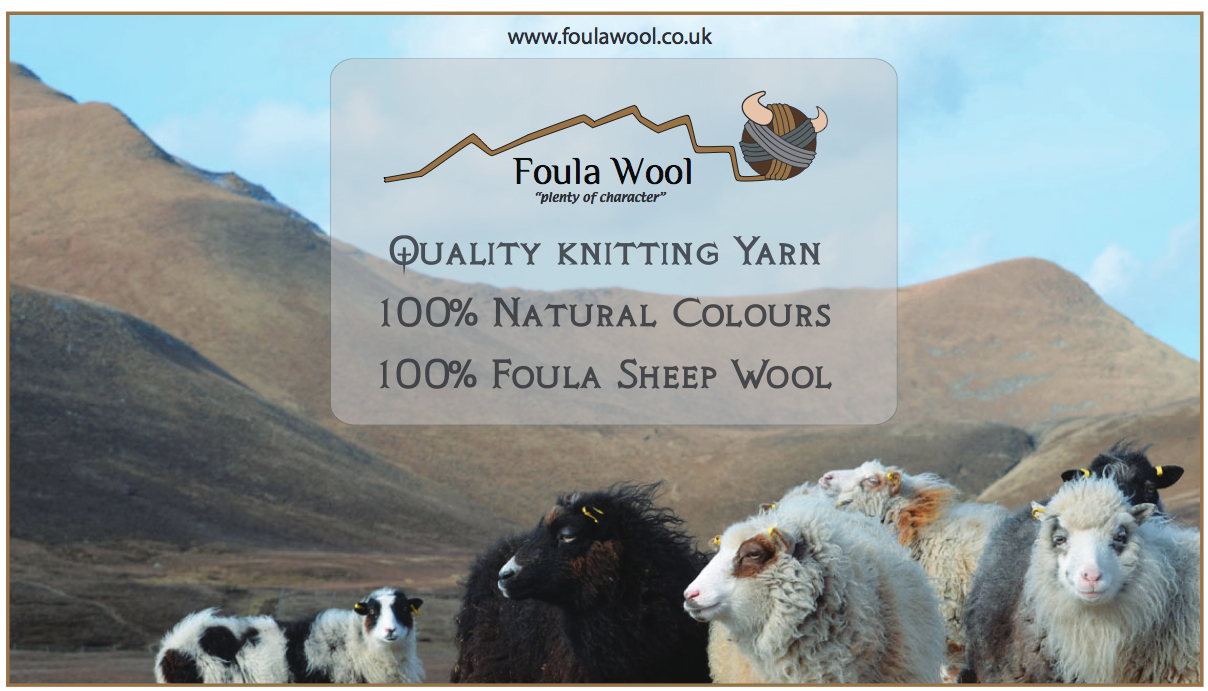It seems that every member of Team Wovember has a soft spot for Magnus and Justyna Holburn’s Foula Wool. Kate has designed a hat/tea-cosy knitting pattern called Tea Jenny. Tom is working on a men’s Fair Isle cardigan knitting pattern, to be launched later in Wovember, and Felix is a general admirer and desperate to record Foula sounds.
Earlier in October Kate caught up with Magnus and Justyna to talk about their fine Foula wool with plenty of character. This Q&A was published on Kate’s own blog on 9 October 2013:
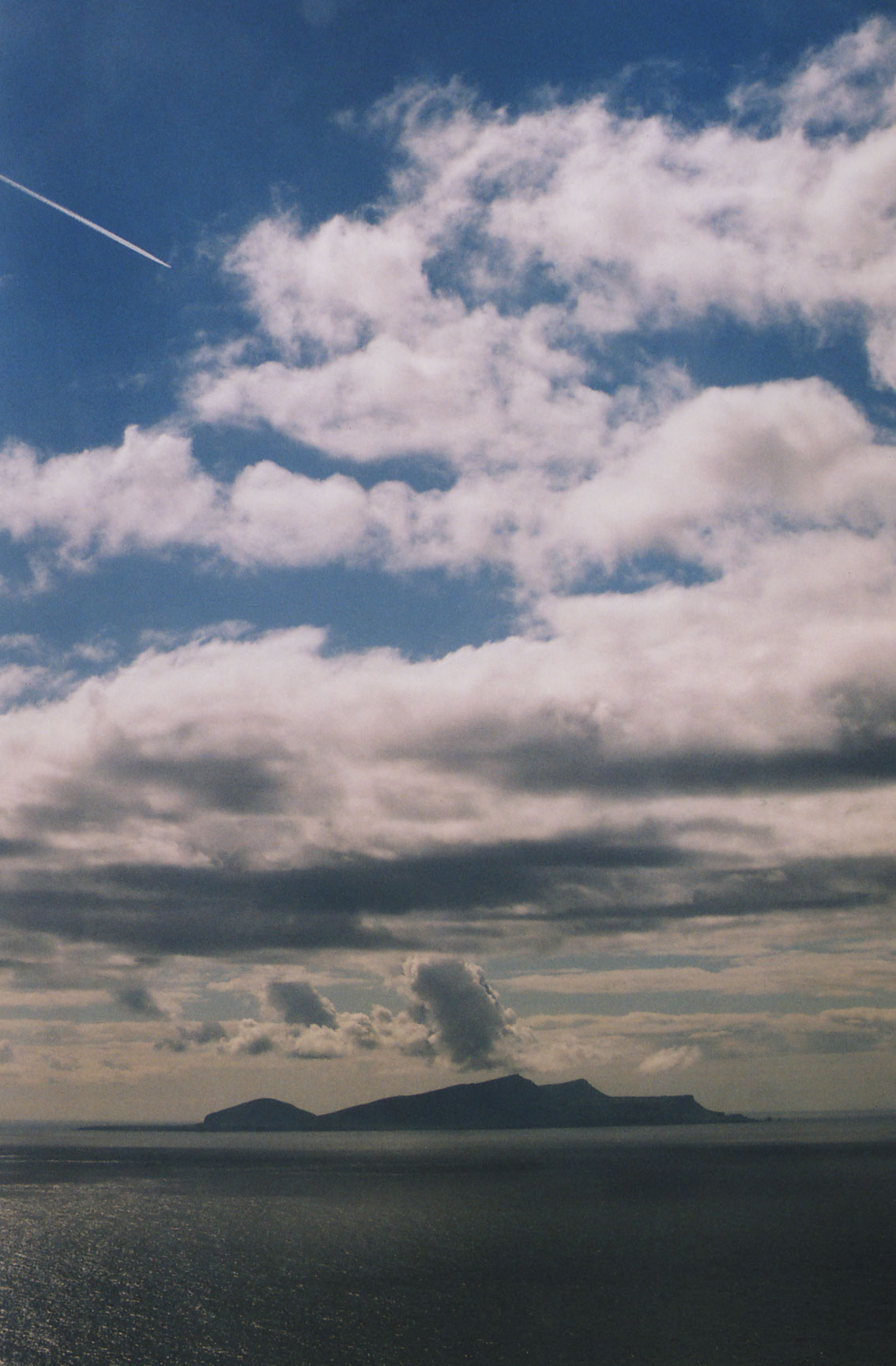
Where is Foula?
Foula (pronounced “foo-laa”) is the most isolated of the Shetland Islands which themselves are the most northerly outpost of the UK. Cut off from the main island group by a formidable sea crossing, Foula lies out to the west of Shetland, approximately 20 miles offshore. The striking silhouette is hard to miss but also equally hard to get to.
Can you tell us a little about Foula sheep? What makes them so different?
Once all sheep in Shetland would have been like the Foula sheep, they are the unmodernised strain of the native Shetland sheep breed. Raised in isolation on our remote island for generations without the external influence of crossbreeding or the flock book they are simply Shetland sheep as nature intended them to be. This strong natural heritage embodies the Foula sheep with their unmistakable character and appearance.
And do you feel that the distinctive landscape of Foula matches and suits the character of your sheep?
Absolutely so. Foula is a wild and rugged landscape with its own unique natural untamed charm and the sheep are as much a part of this as the dramatic scenery itself. In fact it would be fair to say that the Foula sheep actually are a part of the island landscape and without them the hills would look decidedly empty and forlorn. We are really hoping that some of this natural character will find its way into our yarn and onto the knitting needles of the people who choose to work with it.
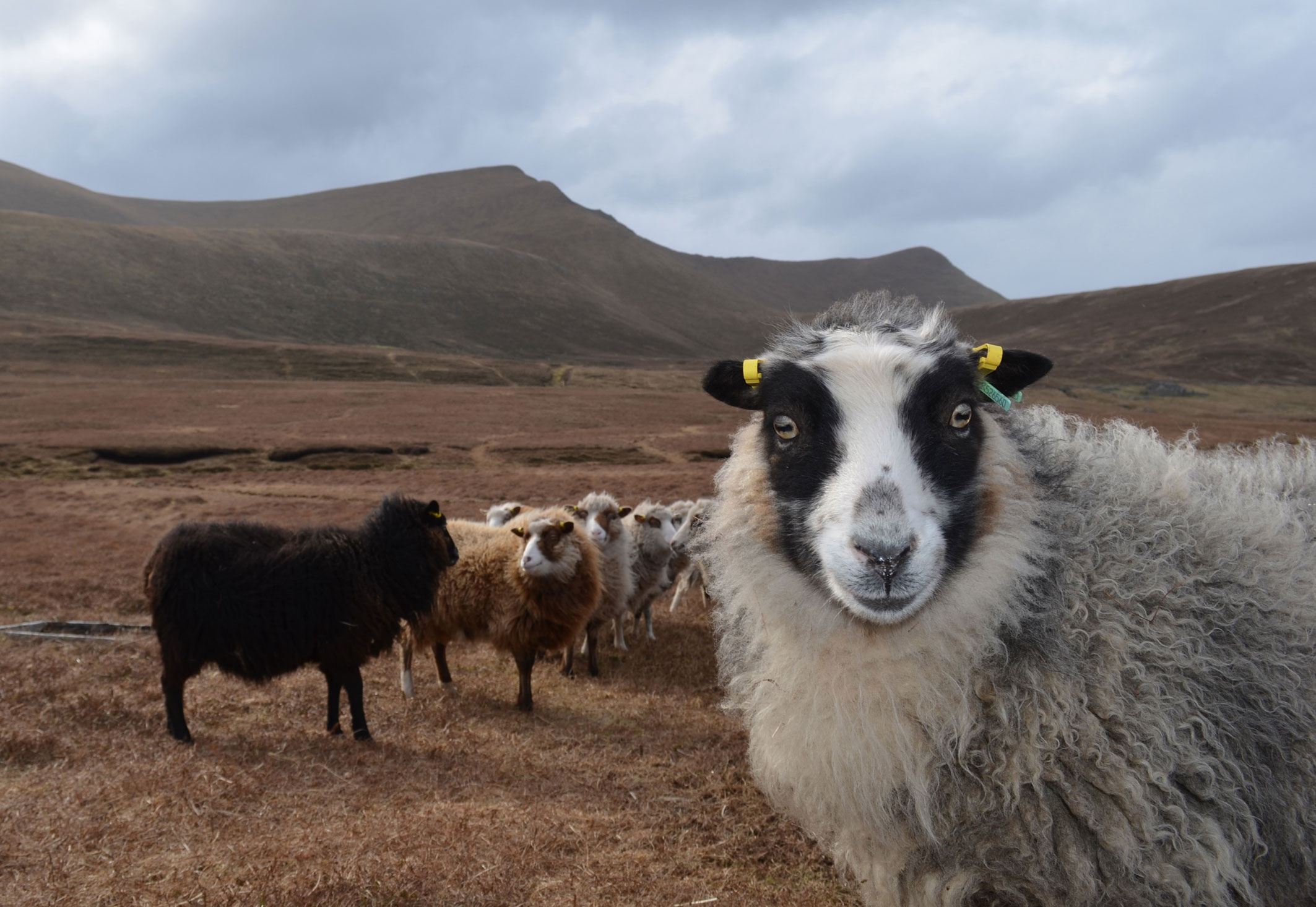
Coloured sheep were once declining in Shetland (and elsewhere) generally. What is now being done to retain and encourage diversity of fleece colour? Is the situation improving?
Foula has always been an important genetic resource for anyone who is looking for coloured Shetland sheep. By and large the crofters on the island have tended to take it upon themselves to ensure that this diversity of natural fleece colour continues. The system is subject to individual preferences and the sustainability of each persons flock. What we are trying to introduce with Foula Wool is something that will help improve a sheep flock’s sustainability whilst also seeking out the natural balance of fleece colours by virtue of what the market is asking for. This in turn is going to depend on the knitters out there making their own choices to knit with these natural wool colours.
The case in point would be our current stock of black yarn. There is a tendency not to keep a lot of black sheep as they are seen as being genetically dominant. Crofters worry about ending up with too many black sheep, so we then actually end up with hardly any at all. Black yarn sells well, so we have now almost sold out of what we had spun. We then put the word out that we are looking for more black fleeces and people then start to keep back more black lambs. Which is exactly what has happened this year.
I know that pure white is actually the least common fleece colour for a Foula sheep, but are there certain fleece shades, or combinations of shades, that are particularly prized? Do you have a favorite natural shade?
My father had a personal preference for dark grey sheep as he felt that their numbers were getting low and he liked their fine wool. He started to keep back dark grey rams from the mothers with the best wool, some of these sheep were really fantastic and they looked almost blue. I grew up working with these animals so I do like to make sure that I have a few in my own flock. I am also very keen on the mioget yarn, which we spin from the white/fawn flekit fleeces. This blend of different coloured fibers ends up with a lovely warm honey like tone that I think is very appealing.
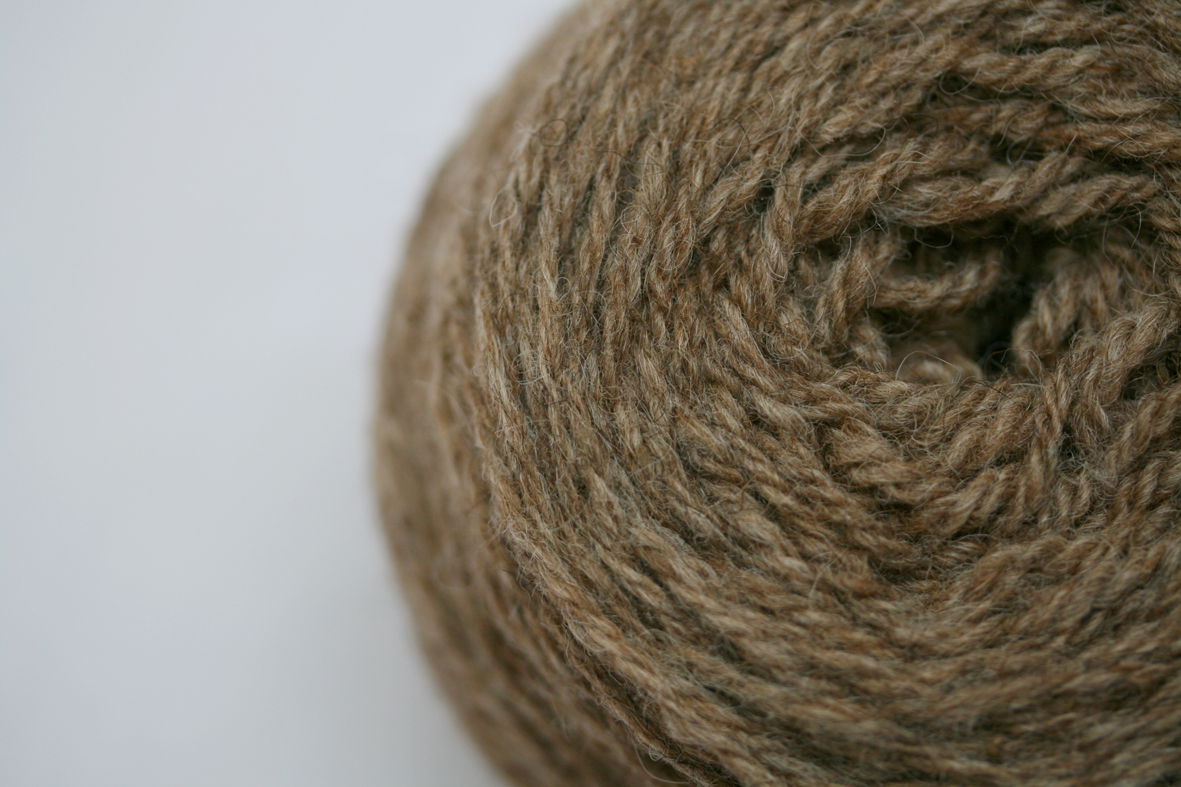
Foula Wool is a relatively new venture. Can you tell us a little about how you came to develop a yarn for hand-knitters?
It was a combination of a desire to help support our native island sheep and the traditional crofting culture that surrounds them along with finding a solution about what to do with all the wool from our own sheep flock. We decided to send off some samples to a spinning mill and then waited eagerly to see what we would get back, whatever it was it had to be better than just burning the fleeces. When we got those first hanks of Foula Wool back we were really thrilled, it was a much better yarn than we had dared hope for.
I think we knew very quickly that this was going to be a yarn for hand knitters. These were the people who would be able to appreciate all the care and effort that goes into creating something. We also knew the yarn would have to remain undyed as the natural colours were already there and they just simply looked great. We opted for a DK weight for our first production run as it seemed to be a gap in the Shetland Wool market. We thought it would be nice for folk to have something that knitted up quickly but still offered all the colour work options they had come to expect from a traditional Shetland knitting yarn. The feedback we started getting from people in the knitting world all helped to confirm that Foula Wool was going to be a yarn for hand knitters.
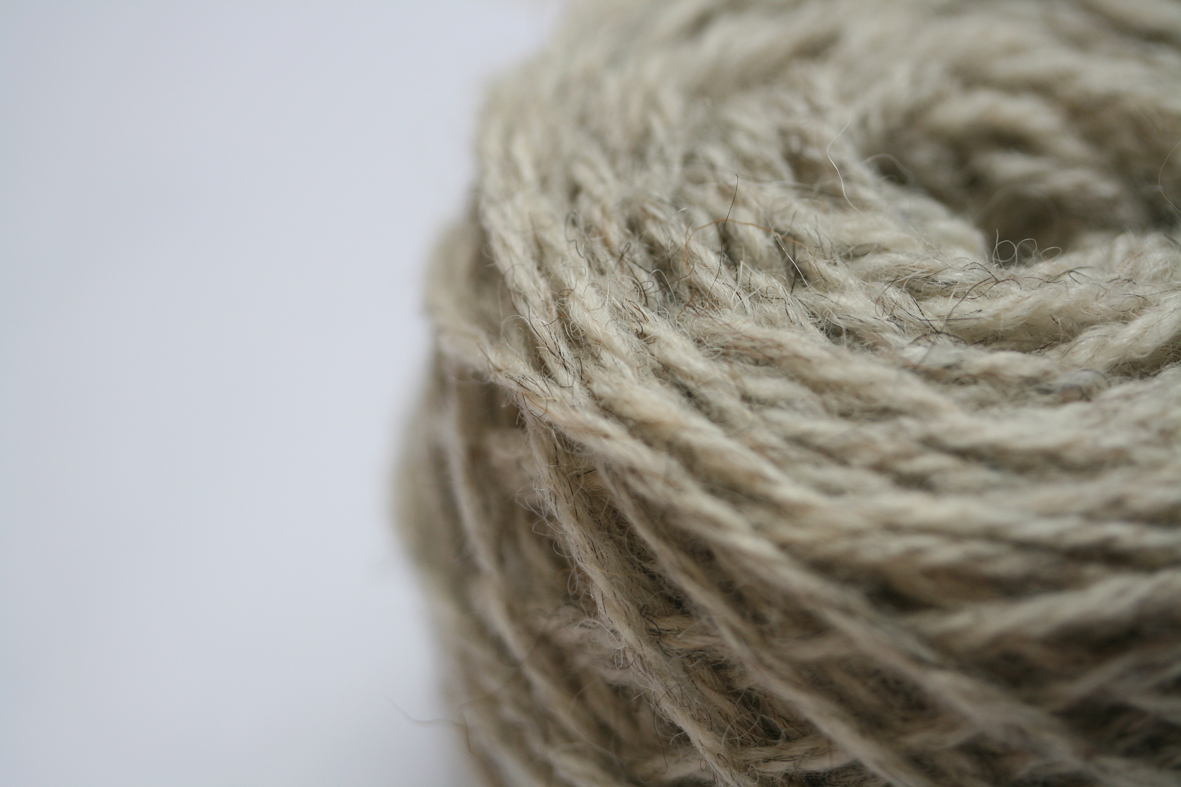
Developing a yarn directly from the sheep can be tricky for small producers. What did you find to be the most challenging aspect of the process?
The most challenging thing so far was the initial step to accept that it was going to be possible and that we would give it a go. You have to commit a lot of time and effort to something like this. Certainly running any business from such a remote location throws up challenges, not least when your going to have wait a whole year for your sheep to grow more wool if something doesn’t work out. However these are just problems that you will have to find solutions for, the same way you find solutions for any of life’s other problems. Making the decision that you want to go out and pin your wool colours to the mast that’s the hard part.

Are you or Justyna knitters yourself? Do you enjoy working with your wool?
We love working with the wool and Justyna is well-bitten by the knitting bug! I find it really rewarding to hear back from people who buy our yarn as it has started to make some sense out of the decision I made years ago when I inherited my own sheep from my father, that I would do my best to keep them going.
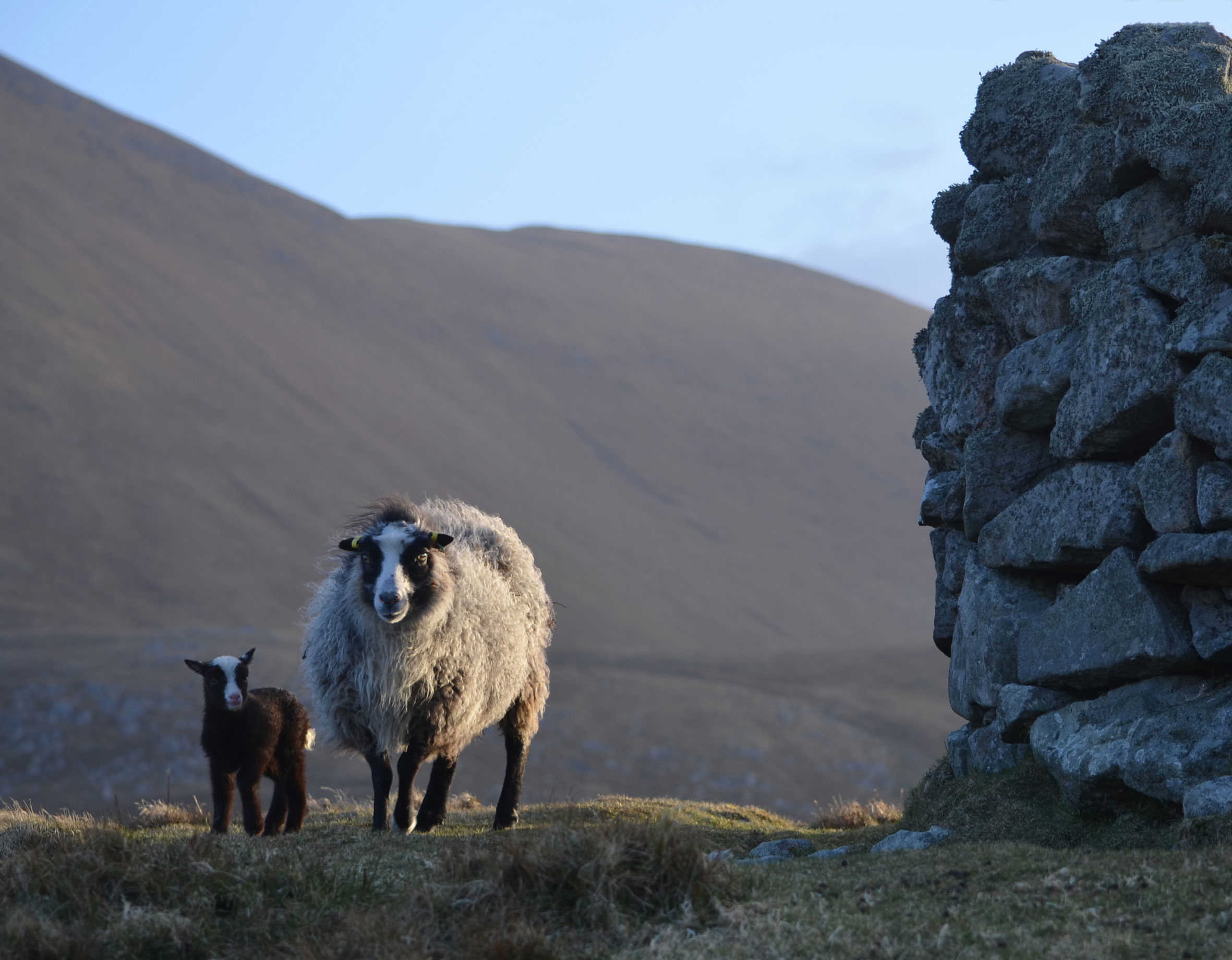
Finally, what’s your favourite hand-knitted garment?
The first thing ever knitted from our Foula Wool, a jumper that Justyna knitted for our eldest son, it doesn’t fit him anymore but his younger brother wears it now. I am always impressed by the natural qualities of pure wool, whether is on the back of a sheep or a little lad out helping his dad with the lambing, you just can’t beat it.
